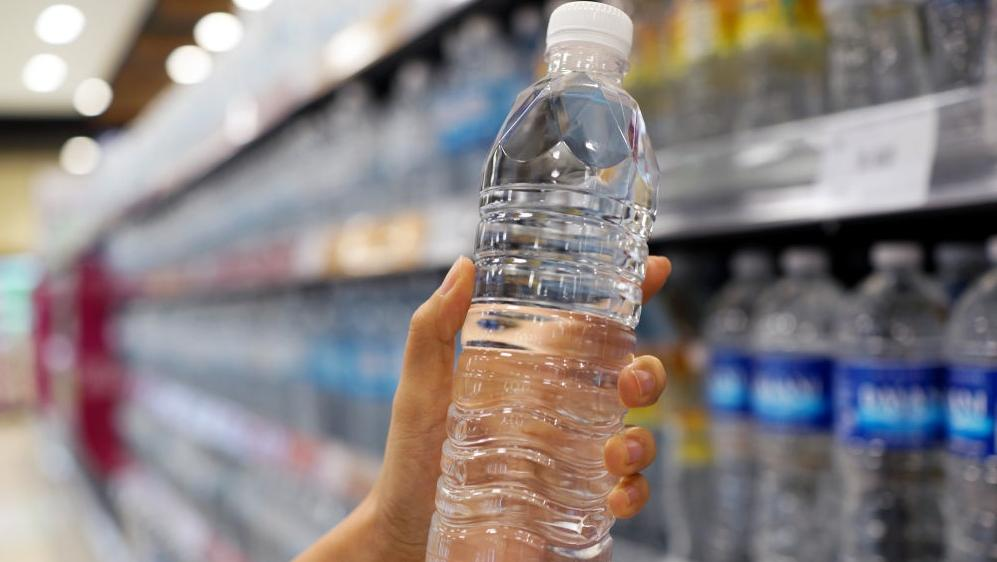Maybe Hold Off On Drinking Bottled Water, If You Can
Experts still aren’t sure how safe it is to ingest the plastics contained in bottled water.
Plastic is everywhere, and it can be found in just about everything, so it's not necessarily a shock to learn that we may be ingesting some when we drink out of plastic water bottles. What is surprising, though, is just how much plastic we could be taking in and how little scientists know about the long-term effects these tiny bits could have on our health.
The Associated Press reports that scientists at Columbia and Rutgers Universities recently examined three common brands of plastic water bottles and found plastic particle levels ranging from 110,000 to 400,000 per liter, averaging at around 240,000 particles. The individual particles themselves are insanely tiny, less than a micron in size, which is smaller than the width of a human hair.
Naixin Qian, a physical chemist at Columbia and leader of the study, explained to the AP that the micro and nano plastics come from the water bottle itself, as well as the membrane filter used to keep out other contaminants. Researchers did not specify which brands of water bottles were tested, but they noted the bottles were purchased at Walmart.
The experts did not want to call out any particular brands until further research could be conducted, and not just because they don't want to insult bottled water companies. A big part of why researchers don't want to jump the gun by pointing the finger at any one brand is because no one knows exactly how ingesting 240,000 microscopic bits of plastic actually affects people.
"That's currently under review," Phoebe Stapleton, co-author of the study and toxicologist at Rutgers, told the Associated Press. "We don't know if it's dangerous or how dangerous. We do know that they are getting into the tissues (of mammals, including people) ... and the current research is looking at what they're doing in the cells."
Scientists have also found thousands of nano and micro plastics in other everyday items, beyond bottled water. Last year, a study from researchers at North Dakota State University found that plastic cutting boards shed between 7.4 to 50.7 grams of microplastics per year, or the equivalent of about 10 credit cards.
It's also fairly common knowledge that you shouldn't microwave plastic containers, yet plenty of brands label their products as "microwave safe." As it turns out, this term does not mean users are safe from microplastic ingestion. Instead, "microwave safe" refers to the fact that the plastic container won't melt or break when heated. A study published in 2023 found that even when food is merely stored in a plastic container, not heated, millions to billions of micro and nano plastic particles end up in the food, and the process only accelerates when the plastic is microwaved.
Despite these various studies, The International Bottled Water Association made a statement regarding the most recent findings from Columbia and Rutgers universities. "There currently is both a lack of standardized (measuring) methods and no scientific consensus on the potential health impacts of nano- and microplastic particles," reads the statement in part. "Therefore, media reports about these particles in drinking water do nothing more than unnecessarily scare consumers."
Maybe the association is right. Perhaps there's no reason to worry until more research is conducted and more concrete conclusions are drawn. On the other hand, researchers involved in the study told the AP that they have all cut back on drinking bottled water as a result. If you have access to good tap water, then it probably wouldn't hurt to try doing the same.
